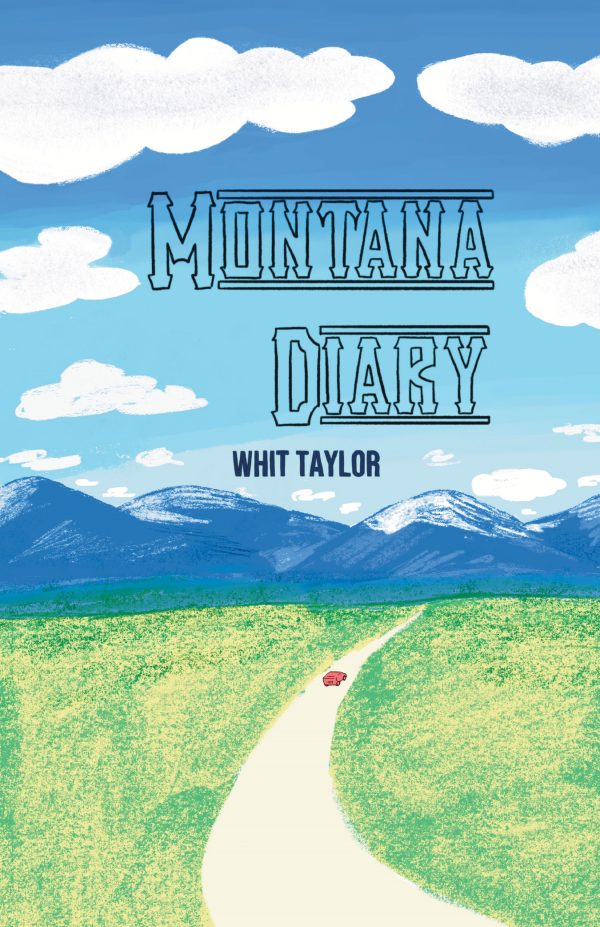Written by Eddie Campbell
Illustrated by Eddie Campbell
Top Shelf
There's hardly a person in the world that doesn't think about money, and that includes a comic writer and artist of longstanding in the industry. In fact, given that comics is an industry where money is short and retirement prospects are bleak, perhaps he's the best person in the world to be discussing how money runs our daily lives. In this part autobiography, part reflection, part travelogue, and part economics lesson, Campbell speaks frankly about his personal life, how money impacts on it, and looks at a unique monetary system that perhaps only one non-native ever understood in this continuation of his periodic non-fiction book series.
I became a fan of Campbell's a few years ago, reading both his fiction and non-fiction work, though ironically, I've yet to tackle the comic he might be best known for, From Hell, with Alan Moore. It's just so huge and daunting. Maybe this summer. Ironically, it's that book which sets the stage for one of the major incidents in this comic, as the success of that graphic novel is the primary reason why Campbell and his wife have a nest egg, which is a modest sum of $73,000 Australian. Over the course of explaining the problems of being an indie cartoonist and trying to save for retirement is the sad story of why Shakespeare once said, "Never a borrower nor a lender be." Campbell's intemperate father in law, a man who seems to have never liked Campbell, ends up losing a lot of his money and asking for theirs to help his wife in their last days. Campbell and his wife agree, but as the story proceeds, it becomes clear they aren't getting the money back.
Panel by innovative panel, which are sometimes painted, sometimes drawn, sometimes photo-referenced (but not in the bad way done by a few notable comic book artists these days), Campbell shows how the borrowed money becomes a major source of stress for him and his family, leading ultimately to family strife that, as of the time of the drawings, had not been satisfactorily resolved--though they do get the money back.
It's a great example of the importance we place on money in Western society and how it can seriously effect us in a multitude of negative ways. Campbell keeps it fairly personal, focusing primarily on things like the $73000 or his aborted video project or how he had to spend a ton of money just to get to write and draw something involving Batman, because it required turning himself into a corporation. Perhaps most telling is his poignant discussion of how money is impacting on his relationship with his wife, whom Campbell clearly loves very much. Those looking for grander commentary won't find it here, but these small moments, taken together, form a bigger picture that is both touching and distressing.
In the second half of the book, Campbell and his wife travel to the island of Yap, where for generations money was represented by giant stone circles, carved from a place far away and given value by an economic system that, according to Campbell has been used in lectures by both Keynes and Friedman to explain monetary theory. An entertaining travel correspondent, Campbell weaves his theme of money into exploring the island, learning its history, and watching as various tourists bound for other places are trapped by fate in Yap's orbit, seemingly oblivious to the wonders he finds there. It's clear Campbell has a bit of disdain for his fellow travelers in their drunken revels and desire to sunbathe when there's unique history to be explored, and it's hard to fault his logic.
Still, I can't image any of those travelers being able to bring the island to life in the way that Campbell does had they shown the inclination. Once again, there's a mixture of drawing, painting, and photo-realism, with the latter mostly done in the style of old, hand-painted postcards. It's a really cool effect that starts off each section of the visit to Yap. Along the way, we learn about the stones, how they were used in trade, and the fact that only one man from outside the culture used to solid effect. He shows how Yap was used and abused, including a local legend about a second island that chose to disappear rather than submit, which might be my favorite of the Yap legends retold by Campbell. I had no idea there was a movie about the place (which is of course NOT centered on the natives) nor that Yap relied heavily on American support these days.
The story of Yap shows that no matter where you go, money has importance, though that importance takes different forms depending on your location. One that isn't different is the quality of this book. It's another great addition to the autobiographical comics world, and fans of that genre should pick this one up right away.
The Lovely Horrible stuff is currently available for pre-order from Top Shelf. Thanks to Top Shelf for the advance copy to review!
Popular Posts
![Sweat and Soap [Ase to Sekken] by Kintetsu Yamada](https://blogger.googleusercontent.com/img/b/R29vZ2xl/AVvXsEgMnQltxjWqGS1_duhCp9Er1a0NbALuSFrqvjaV4_PjN_w67xCGghYt-l0qKyqTH7Ei7gbq_mxVq8aPAuOiyaArwAMLJWhpGmOYaARUBnwvjmv2-ZIe20m_zR5CvKnPdI6US_AuOnmi3gSX/w680/57525895-BA7E-4EF8-9FE4-89F9C164E1A4.jpeg)
graphic novels
Sweat and Soap [Ase to Sekken] by Kintetsu Yamada
Translate
Footer Copyright
Design by - Blogger Templates | Distributed by Free Blogger Templates







